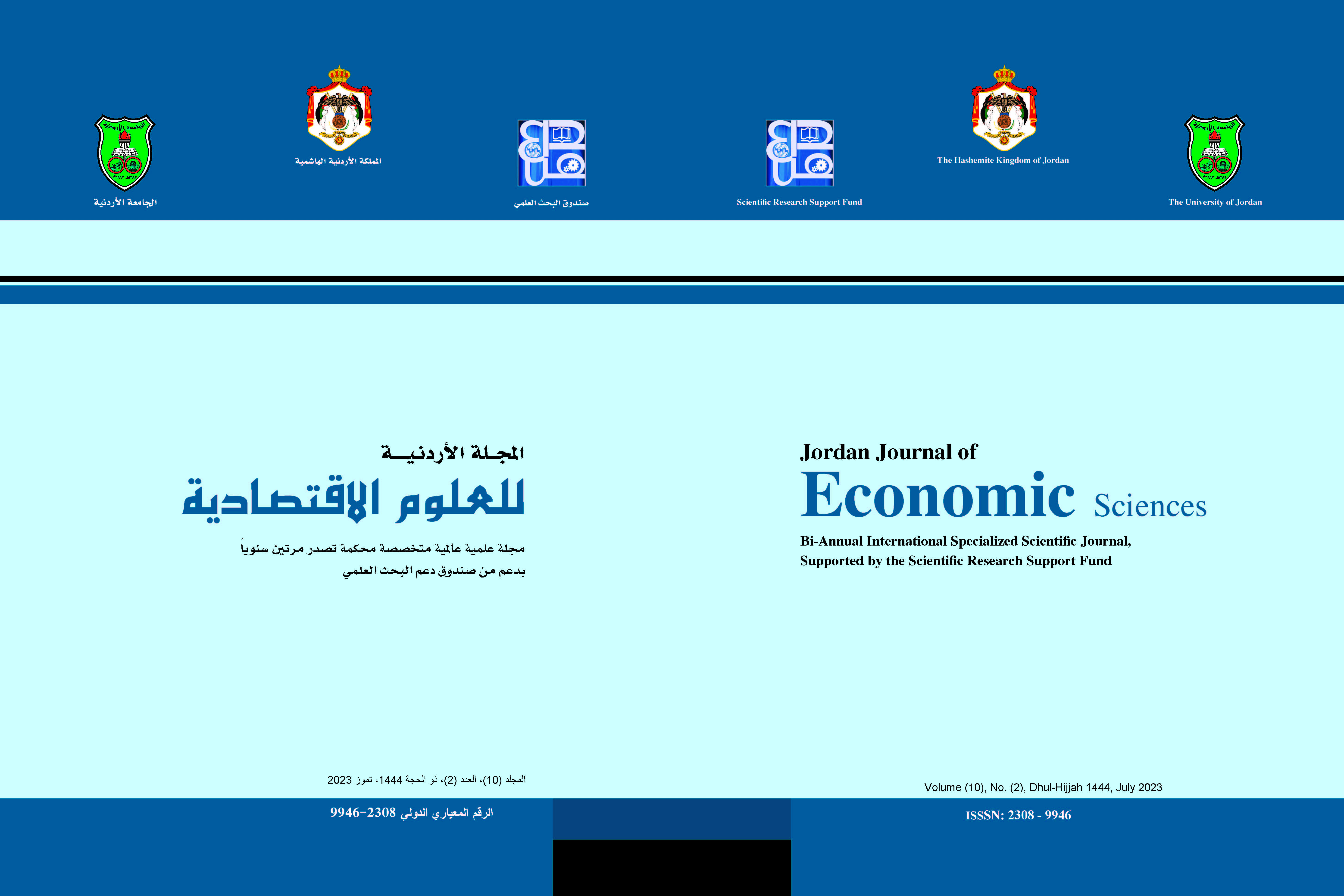Identification of the Leading Economic Sectors of Nigeria: A Typology Juxtapose of Nigerian Economy Vis-À-Vis African Economies
DOI:
https://doi.org/10.35516/jjes.v10i2.1396Keywords:
Economies, Nigeria, Africa, Sectors, PerformanceAbstract
Objectives: The typology of Nigeria's economy was examined alongside those of West Africa, sub-Saharan Africa, and developing economies in Africa using time-series data from 1970 to 2018. Some issues remain and will continue to attract the attention of academics, activists, members of civil society, and practitioners to answer the question if Nigeria is capable of realizing its vast potential and maintaining its ability to grow.
Methods: The data covered values of nine sectors in each of the economy at constant prices and the data were analyzed using inferential statistics.
Results: The empirical evidences showed crude oil and solid mineral to be the major basic sectors of Nigerian economy at sub-regional level. While beyond, Nigerian economy shifted to agriculture and tertiary production chain sectors and the possible reason may be due to emerging oil economies in Africa. Furthermore, vis-à-vis the regional economies, agriculture and allied activities, and tertiary sectors of Nigerian economy have the potential development to grow faster. The possible reasons for this are that they are long-term sustainable, appropriate, and reliable alternative sources of revenue earning due to the global collapse in oil prices and insurgencies affecting the Nigerian economy's mineral resources and secondary production sectors. Besides, the secondary production chain needs to be strengthened to become potential, thus complementing the non-oil sectors of the Nigerian economy.
Conclusions: Therefore, for the welfare of Nigerians, the surest means is for the policymakers to hold on to optimal potential development of agriculture and allied activities, and tertiary production sectors of the country’s economy. For sustainability of Nigerian economy, it must be non-oil diversified supported by agriculture and allied sector. This is because the most appropriate way to enhance the country’s economy is to harness the economic activities that are the foundation of majority of Nigerians’ economic life and will be able to accommodate the existing human resource conditions.
References
Adetokunbo, A.M. and Edioye, O.P. (2020). Response of economic growth to the dynamics of service sector in Nigeria. Future Business Journal, 6(1):27
Budiharsono, S. (2001). Teknik Analisis Pembangunan Wilayah Pesisir Dan Lautan. Pradnya Paramita.
Cahyono, S.A. and Wijaya, W.W. (2014).Pendapatanantar kabupatendi sub das Bengawan Solo Hulu (Identification of the leading economic sectors and income disparity among regencies in upper Bengawan Solo sub watershed). Jurnal Penelitian Sosial dan Ekonomi Kehutanan, 11(1): 32-43.
Chete, L.N., Adeoti, J.O., Adeyinka, F.M. and Ogundele, O. (2014). Industrial development and growth in Nigeria: Lessons and challenges. Learning to compete, Working Paper No. 8. Pp. 1
Dewi, N.M.W.S. and Yasa, I.N.M. (2018). Perencanaan Pembangunan Di Kabupaten Karangasem. 7: 152–83.
Edo, S. and Ikelegbe, A. (2014). The Nigerian Economy Reforms, Emerging Trends And Prospects. CPED Monograph Series No. 8. Pp. vii-ix
Hartarto, R.B. (2016).Identifikasi Potensi Ekonomi Kecamatan Tanjungsari Kabupaten Gunungkidul Yogyakarta. Jurnal Ekonomi and Studi Pembangunan, 17(1): 16–21.
Jumiyanti, R.K. (2018).Analisis location quotient dalam penentuan sektor basis dan non basis di kabupaten Gorontalo. Gorontalo Development Review, 1(1):29. lessons from Malaysia. Journal of Development and Agricultural Economics, 3(8):368-378
Nazipati (2007).Aplikasi model static dan dynamic location quotients dan shift-share dalam perencanaan ekonomi regional (Studi Kasus Kabupaten Ogan Komering Ulu Propinsi Sumatera Selatan). Eko-Regional 2.
Okezie, C.A. and Amir, B.H. (2011). Economic crossroads: The experiences of Nigeria and
Patiung, M. and Wisnujati, N. (2020). Analysis of sustainability economic sector in Probolinggo District East Java Province-Indonesia.Agricultural Socio-Economics Journal, 20(4):277-284
Sapriadi and Hasbiullah (2015).Analisis penentuan sektor unggulan perekonomian kabupaten Bulukumba. Jurnal Iqtisaduna 1(1): 53-71.
Suyatno, S. (2007). Analisaeconomic base terhadap pertumbuhan ekonomi daerah tingkat ii wonogiri : menghadapiimplementasi Uu No.22/1999 Dan Uu No. 5/1999. Jurnal Ekonomi Pembangunan: Kajian Masalah Ekonomi dan Pembangunan, 1(2): 144.
Wisnujati, N. and Patiung, M. (2020). As the Agriculture, forestry and fisheries sector still as a potential in the prosperity of Indonesian Society. Agricultural Socio-Economics Journal, 20(4):319-326.



